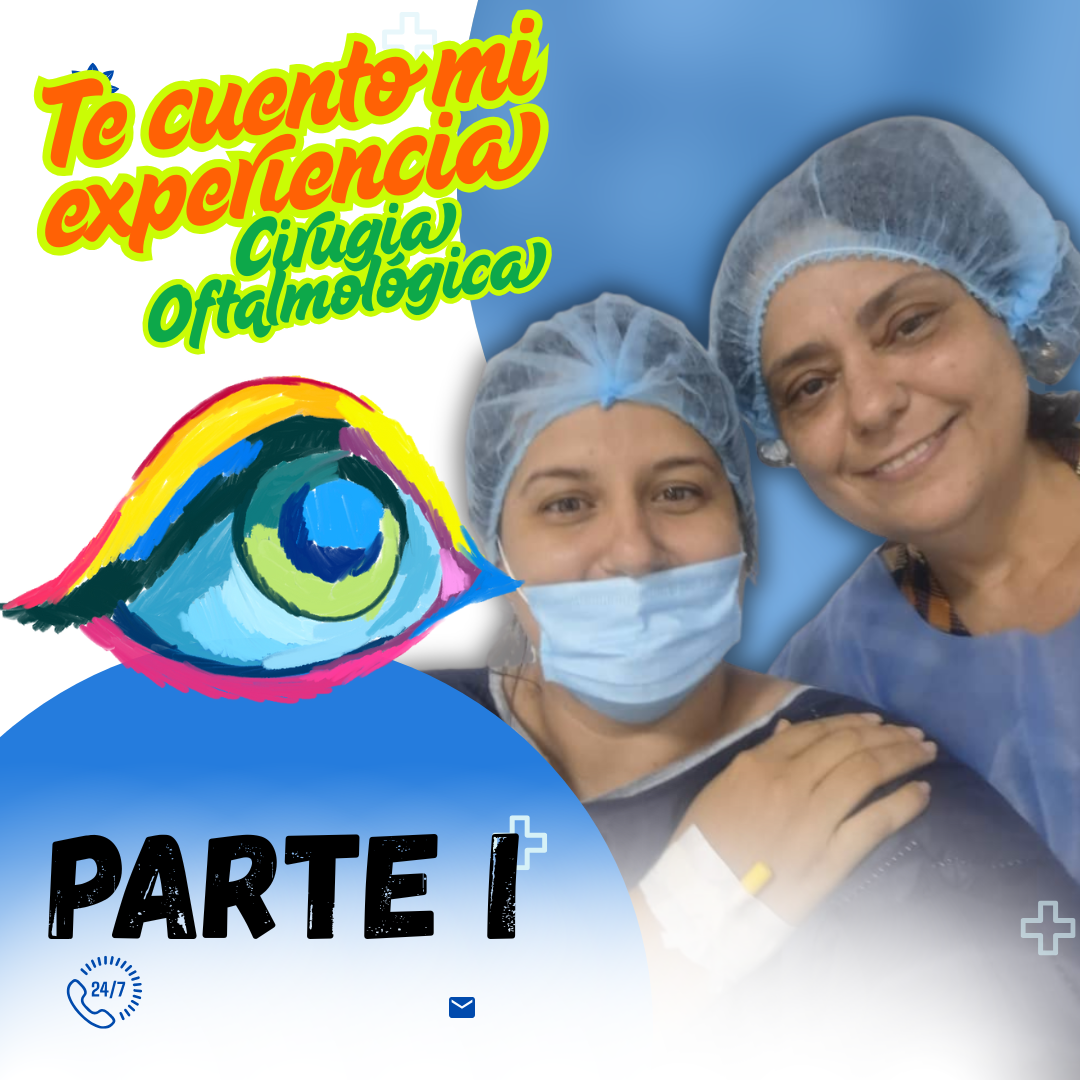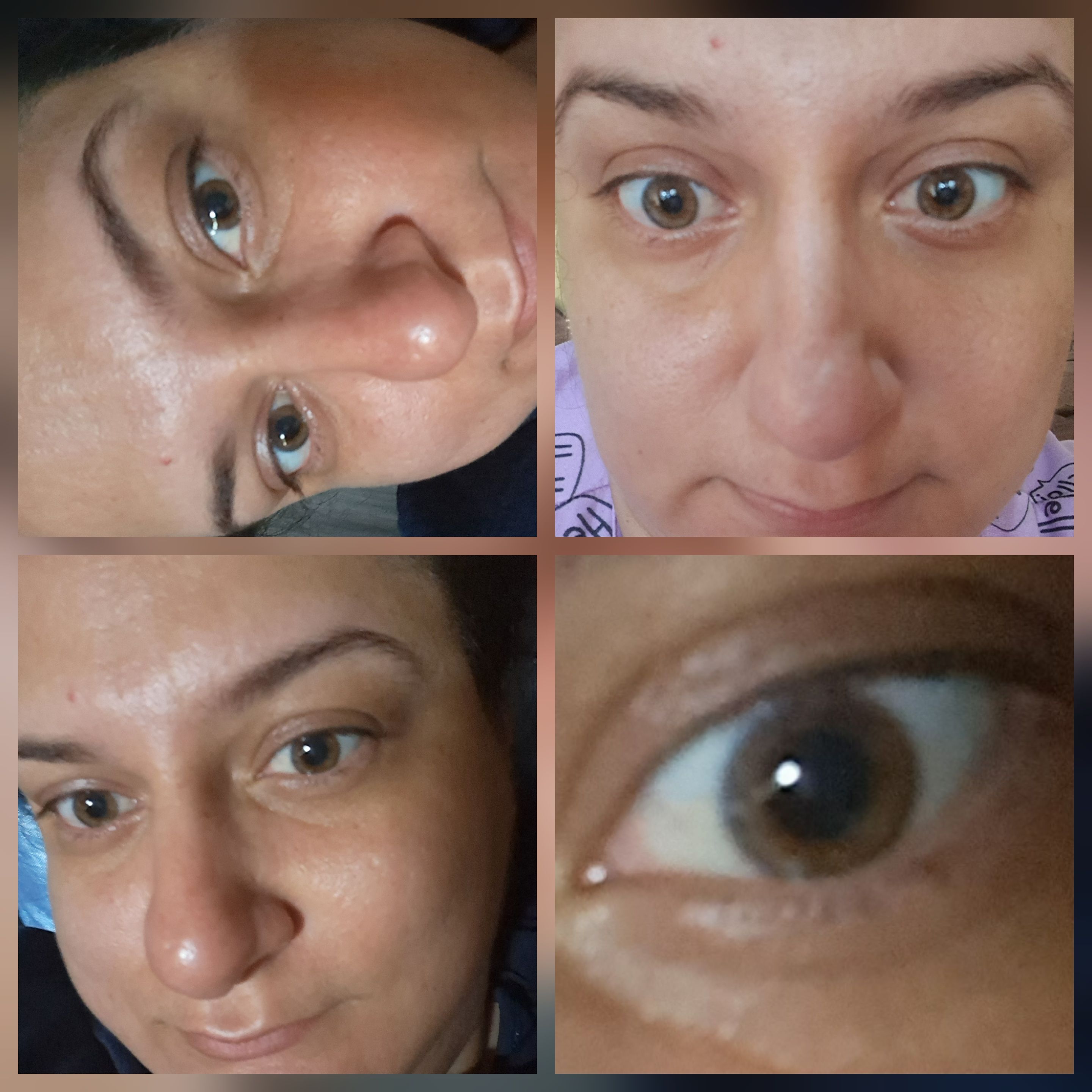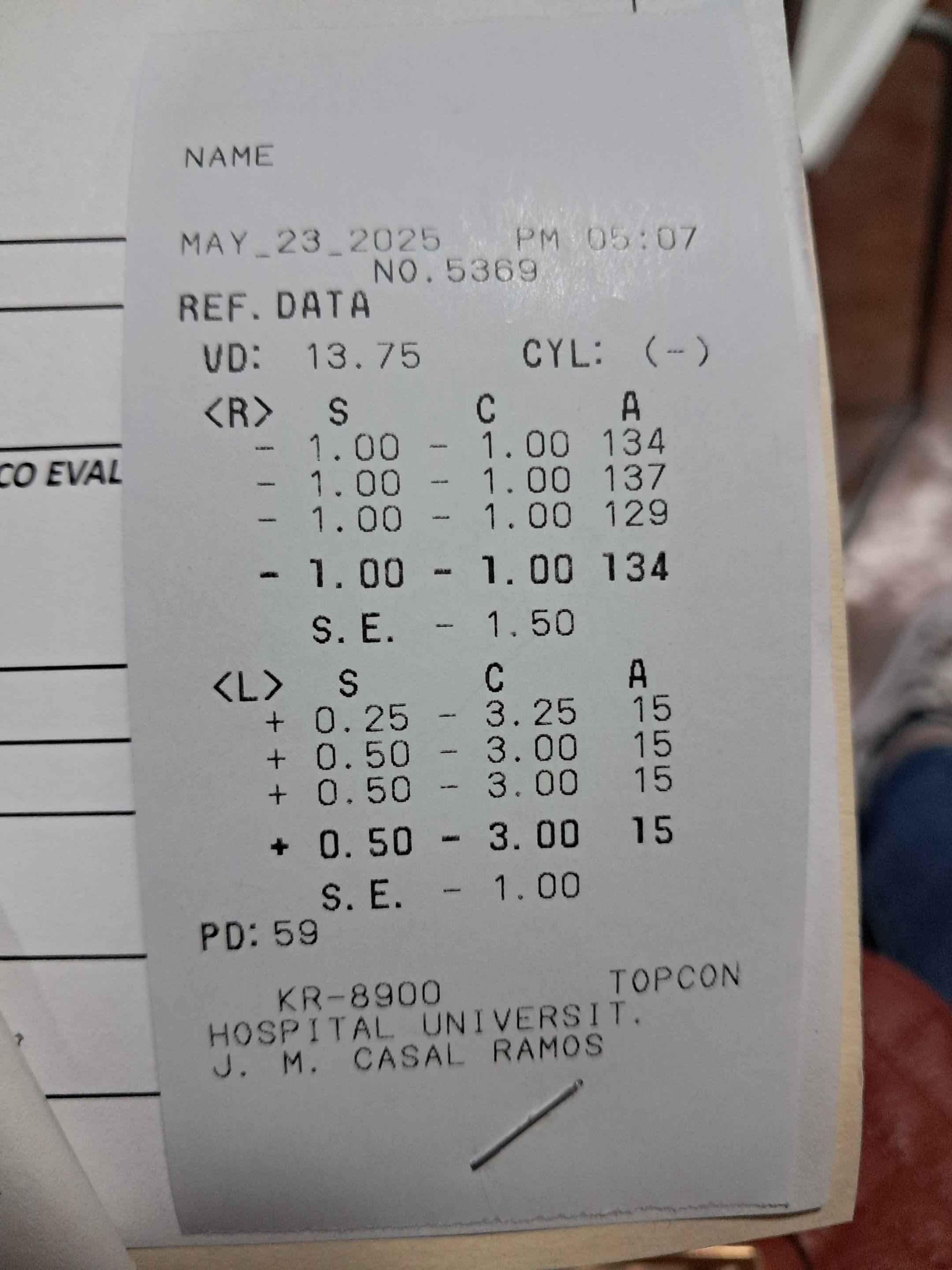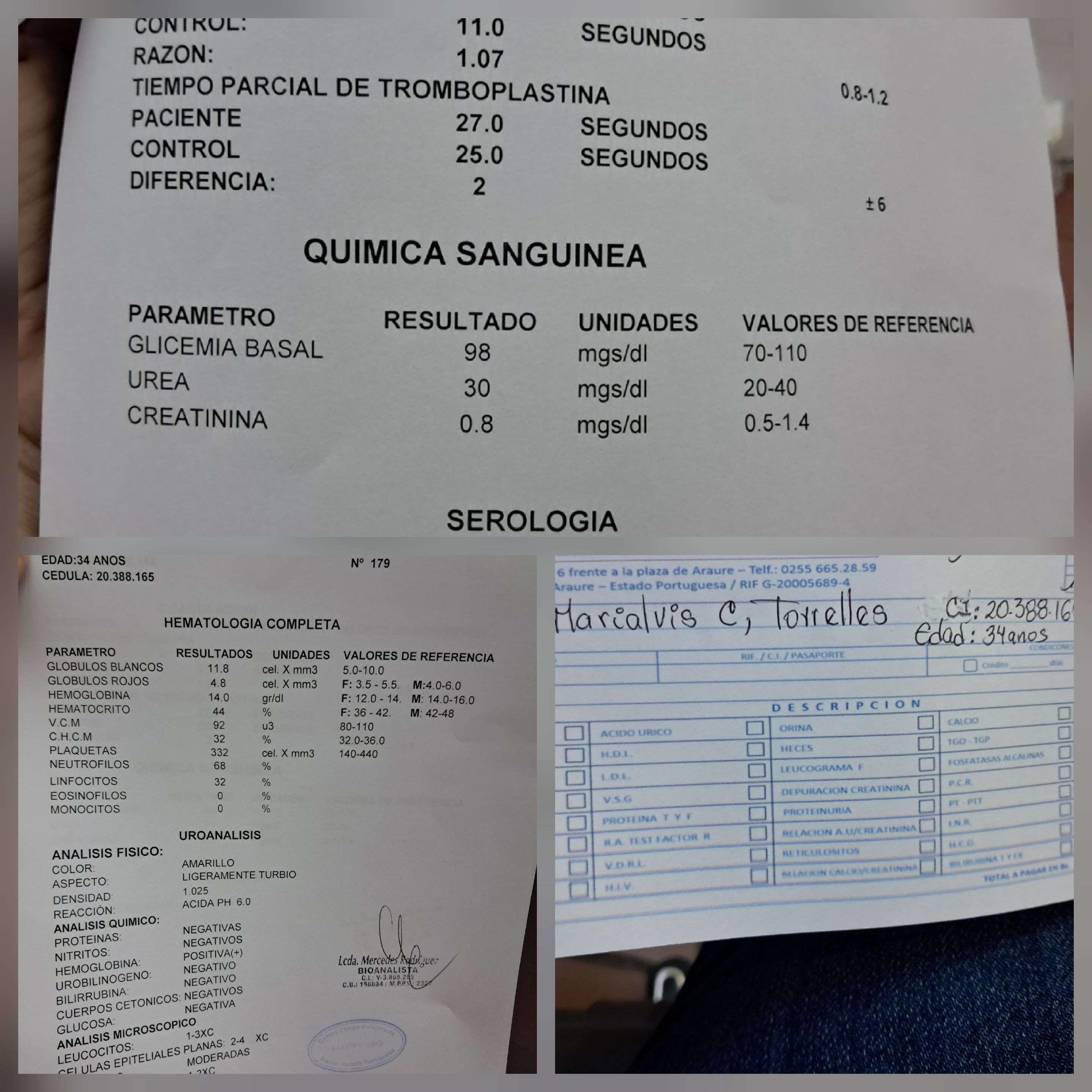
 #
# 
Un tema quizás un poco diferente a lo que estás acostumbrado a observar en mi espacio, pero con mucho cariño, te traigo aquí lo que ha sido mi experiencia en la cirugía oftalmológica que viví hace algunas semanas. Ahora me encuentro completamente lista para contarles mi experiencia, poco a poco, una vivencia basada en mi realidad como paciente y en cómo algo tan sencillo puede cambiar la vida de una persona. Me da mucho gusto poder saludarlos nuevamente.
A topic perhaps a little different from what you are used to see in my space, but with much affection, I bring you here what has been my experience in the ophthalmologic surgery I underwent a few weeks ago. Now I am completely ready to tell you my experience, little by little, an experience based on my reality as a patient and how something so simple can change a person's life. It gives me great pleasure to be able to greet you again.
Quise dividir esta publicación en varias partes para organizar de mejor manera mi experiencia. Aquí te quiero contar un poco sobre la exotropía y cómo llegó a mi vida desde que era niña. Actualmente tengo 34 años, y, según comentarios de familiares y amigos, mi estrabismo apareció cuando era pequeña. No puedo afirmarlo con certeza, pero por valoración médica sé que mi condición no fue congénita, sino adquirida; es decir, no nací con ella, simplemente apareció después de haber nacido. Mis padres me cuentan que se percataron de mi condición cuando tenía aproximadamente dos años, mientras nos desplazábamos en un Jeep propiedad de mi papá. Un primo, recién despertado, me sacó por la ventana del carro, y la brisa golpeó muy fuerte mi rostro. Al día siguiente, comenzaron a notar que algo no estaba bien en mis ojos. Desde entonces, esta condición se hizo evidente.
I wanted to divide this post into several parts to better organize my experience. Here I want to tell you a little about exotropia and how it came into my life since I was a child. I am currently 34 years old, and, according to comments from family and friends, my strabismus appeared when I was a little girl. I can not say for sure, but by medical assessment I know that my condition was not congenital, but acquired; that is, I was not born with it, it just appeared after I was born. My parents tell me that they became aware of my condition when I was about two years old, while we were traveling in a Jeep owned by my father. A cousin, just awakened, pulled me out of the window of the car, and the breeze hit my face very hard. The next day, they began to notice that something was wrong with my eyes. Since then, this condition became evident.
Seguramente has observado a algunos niños que desvían sus ojos de manera involuntaria, ya sea hacia adentro, afuera, o arriba y abajo. Médicamente, esta condición se llama exotropía y consiste en el desvío de los ojos. Tiene varias clasificaciones, dependiendo de la evaluación y valoración que realice el oftalmólogo. Yo particularmente tenía exotropía intermitente en ambos ojos, lo que ocasionaba el desvío involuntario hacia afuera, a veces por fatiga o malestar ocular. Esto ha ido avanzando con el tiempo y actualmente provoca una fatiga y migrañas bastante incontrolables, ya que observar o mirar algún objeto me causaba irritación y mucha incomodidad, especialmente en mi labor docente, donde es esencial tener buena salud ocular.
You have probably observed some children involuntarily averting their eyes, either inward, outward, or up and down. Medically, this condition is called exotropia and consists in the deviation of the eyes. It has several classifications, depending on the evaluation and assessment by the ophthalmologist. I particularly had intermittent exotropia in both eyes, which caused involuntary outward drifting, sometimes due to fatigue or eye discomfort. This has been progressing over time and currently causes quite uncontrollable fatigue and migraines, since observing or looking at any object caused me irritation and a lot of discomfort, especially in my teaching work, where it is essential to have good eye health.
Seguramente te preguntarás por qué no me operé cuando era niña o en la adolescencia. En mi adultez, me hice esa pregunta muchas veces, quizás por la ignorancia de mis padres o el desconocimiento del tema, o incluso por comentarios de personas desinformadas o malintencionadas. No se llevó a cabo una cirugía, aunque desde que adquirí la madurez necesaria para tomar decisiones, siempre he cuidado mi salud ocular, acudiendo al médico y realizando diversas valoraciones que indicaban la necesidad de una intervención quirúrgica para mejorar las molestias y también el aspecto estético que me afectaba. Recuerdo haberle preguntado a mi madre por qué no procedió a llevar a cabo la cirugía. Ella me decía que se inclinaba más hacia el miedo o el temor a un daño irreversible que pudiera ocasionarme. Coincidir con un buen médico era bastante complejo. Mi madre me confirma que, después de todos esos comentarios y el miedo que pudo haber sentido, decidió no operarme, pero sí utilizar diversas técnicas para la corrección, como parches, lentes y una gran cantidad de ejercicios visuales que consistían en tapar un ojo y realizar ejercicios con el otro destapado, y viceversa.
You are probably wondering why I did not have surgery when I was a child or a teenager. In my adulthood, I asked myself that question many times, perhaps because of my parents' ignorance or lack of knowledge on the subject, or even because of comments from uninformed or ill-intentioned people. Surgery was not carried out, although since I acquired the necessary maturity to make decisions, I have always taken care of my eye health, going to the doctor and making various assessments that indicated the need for a surgical intervention to improve the discomfort and also the aesthetic aspect that affected me. I remember asking my mother why she did not proceed with the surgery. She would tell me that she was more inclined to fear or fear of irreversible damage that might be done to me. Matching me with a good doctor was quite complex. My mother confirms that, after all those comments and the fear she may have felt, she decided not to operate, but to use various techniques for correction, such as patching, glasses and a lot of visual exercises that consisted of covering one eye and doing exercises with the other eye uncovered, and vice versa.
Con el paso del tiempo y durante mi proceso de escolarización, se notó otro problema: la presencia de miopía. No era un grado tan alto, pero estaba presente, y desde entonces todo causaba gran molestia, sin posibilidad de cirugía. Así crecí, me desenvolví en distintos ámbitos y nunca logré, con solidez, una operación. Después de cierto tiempo, la decisión de una cirugía oftalmológica no estaba en manos de mis padres, sino en las mías, pero había otro obstáculo: el costo elevado de este procedimiento en mi país. Aunque se considera una operación ambulatoria de menor riesgo, requiere una valoración preoperatoria y postoperatoria que implica mucho dinero, lo que hacía que se volviera un sueño inalcanzable.
As time went by and during my schooling process, another problem was noticed: the presence of myopia. It was not such a high degree, but it was present, and since then everything caused great discomfort, without the possibility of surgery. So I grew up, I developed in different areas and I never managed, with solidity, an operation. After some time, the decision for ophthalmologic surgery was not in my parents' hands, but in mine, but there was another obstacle: the high cost of this procedure in my country. Although it is considered a lower-risk outpatient operation, it requires a preoperative and postoperative assessment that involves a lot of money, which made it an unattainable dream.
Quizás te estarás preguntando cómo afectaba esta condición en mi vida y mi desarrollo con los demás. Ciertamente, crecí en un ambiente escolar y familiar donde nunca recibí comentarios negativos sobre mi condición ni me hicieron sentir mal por no fijar la mirada correctamente hacia un objeto o el rostro de algunas personas. Claro, en ocasiones existían comentarios, pero fueron solo uno o dos, mientras que el resto marchaba con normalidad. Sin embargo, aparte de ser una molestia física y causarme fatiga, como mencioné anteriormente, se estaba convirtiendo en una carga el no poder enfocar correctamente los objetos, tomarme ciertas fotos y no poder ver la alineación correcta de mi ojo. Esto comenzó a causarme incomodidad. No por baja autoestima, ya que he logrado muchas cosas y esto no ha sido un problema, sino porque quería verme bien y no estaba ocurriendo. Fui afortunada de tener personas positivas en mi vida, algunas con curiosidad sobre por qué no miraba correctamente o no tenía una alineación adecuada en mi vista. Siempre dejé claro que el estrabismo es una condición que puede aparecer en cualquier etapa de la vida; no necesariamente tienes que nacer con ella, sino que, como en mi caso, puede ser adquirida en cualquier momento.
You may be wondering how this condition affected my life and my development with others. Certainly, I grew up in a school and family environment where I never received negative comments about my condition nor was I made to feel bad for not looking properly at an object or a person's face. Sure, sometimes there were comments, but they were only one or two, while the rest went on as normal. However, apart from being a physical discomfort and causing me fatigue, as I mentioned before, it was becoming a burden not being able to focus correctly on objects, take certain pictures and not being able to see the correct alignment of my eye. This began to cause me discomfort. Not because of low self-esteem, as I have accomplished many things and this has not been a problem, but because I wanted to look good and it wasn't happening. I was fortunate to have positive people in my life, some curious about why I was not looking correctly or not having proper alignment in my vision. I always made it clear that strabismus is a condition that can appear at any stage of life; you don't necessarily have to be born with it, but, as in my case, it can be acquired at any time.
Hace aproximadamente un año fui al oftalmólogo y obtuve un presupuesto que ya era un poco más costoso y estaba fuera de mi alcance económico. Me quedé tranquila, adapté nuevamente la fórmula y la corrección de mis lentes, y decidí tomarlo todo con calma. Te preguntarás cómo llegué a la cirugía. Por mi trabajo, había hecho un censo de patologías y opté por llevar a cabo una evaluación para determinar si era necesaria la cirugía. Al cabo de unos meses, fui llamada por el servicio público y financiamiento del estado para un proceso de evaluación y revisión oftalmológica, donde el equipo médico consideró necesario llevar a cabo mi cirugía. Así comenzó esta nueva aventura, llena de nervios, incertidumbre, incomodidad y preocupación, tal como imagino lo sintieron mis padres hace muchos años. Me sentí aferrada a la fe en Dios y a que todo saldría bien. Acepté la evaluación y se inició todo este proceso largo, tedioso y, quizás, incómodo, ya que cada revisión requería dilatar la vista, lo que me causaba mucha irritación y malestar.
About a year ago I went to the ophthalmologist and got a quote that was already a little more expensive and out of my financial reach. I stayed calm, adapted the formula and the correction of my lenses again, and decided to take it all in stride. You may wonder how I got to the surgery. Because of my job, I had done a pathology census and opted to have an evaluation to determine if surgery was necessary. After a few months, I was called by the public service and state funding for a process of evaluation and ophthalmologic review, where the medical team considered it necessary to perform my surgery. Thus began this new adventure, full of nerves, uncertainty, discomfort and worry, just as I imagine my parents felt many years ago. I clung to my faith in God and that everything would be all right. I accepted the evaluation and this long, tedious and, perhaps, uncomfortable process began, since each revision required dilating my eyesight, which caused me a lot of irritation and discomfort.


A medida que pasaban los días, esperaba ansiosamente ser llamada para las jornadas de operación. Durante ese tiempo, me tomé la tarea de averiguar quién era el equipo médico al que me estaban remitidos, y, sorprendentemente, era un equipo calificado al que ya había sido referida anteriormente para la cirugía. Mis nervios se calmaron y me sentí tranquila, simplemente a la espera del momento. Los días parecían años, pero seguía con mis actividades cotidianas, cuidándome mucho de mantener controlada mi hipertensión y no tener fatiga por el trabajo. Finalmente, fui convocada para la revisión de exámenes de laboratorio y, posteriormente, las respectivas evaluaciones que se hacen en un quirófano, como revisión cardiológica, oftalmológica e electros, para obtener un veredicto final. Luego, me llamaron para darme respuesta a toda esta revisión. Estaba preocupada porque había tenido episodios de tensión arterial alta, lo que me mantenía incómoda, pero sorpresivamente, todos mis análisis habían salido normales, incluso las evaluaciones de tórax, laboratorio y electrocardiograma. Esto significaba que estaba a pocos días de mi operación.

As the days went by, I anxiously awaited being called for the operating days. During that time, I took it upon myself to find out who the medical team was that I was being referred to, and, surprisingly, it was a qualified team that I had been referred to before for surgery. My nerves calmed and I felt calm, just waiting for the moment. The days seemed like years, but I went about my daily activities, taking great care to keep my hypertension under control and not be fatigued from work. Finally, I was summoned for the review of laboratory tests and, later, the respective evaluations that are done in an operating room, such as cardiology, ophthalmology and electroscopy, to obtain a final verdict. Then, they called me to give me an answer to all this review. I was worried because I had been having episodes of high blood pressure, which kept me uncomfortable, but surprisingly, all my tests had come back normal, including chest, lab and EKG evaluations. This meant that I was only a few days away from my operation.
En esta primera parte, quise contarte cómo ha sido mi experiencia con esta condición y el proceso que he seguido para llegar a la cirugía. En el siguiente post, te contaré más a fondo sobre cómo fue el día de la operación y, sucesivamente, te mostraré las fotos y lo que pude documentar acerca de la recuperación y cómo me iba sintiendo con el paso de los días.
In this first part, I wanted to tell you about my experience with this condition and the process I followed to get to the surgery. In the next post, I will tell you more in depth about how was the day of the surgery and, successively, I will show you the pictures and what I was able to document about the recovery and how I was feeling as the days went by.
Todas las imágenes son de mi propiedad. Utilicé traductor DeepL versión gratuita Imágenes, separadores, banner hechos en Canva Contenido original de @marytp20
